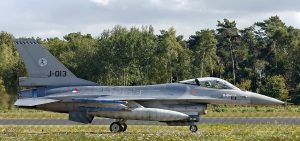Resource: https://www.cmu.edu/teaching/principles/learning.html
Author Archives: faeyza
Final Synthesis
Precis of Flight Path
As an instructional designer in the corporate sector, I have designed training courses mostly with predefined customer requirements. My main goals for this course were to:
- Play with tools and technologies that I had not explored yet.
- Apply frameworks as a reference to purposefully select learning technologies.
- Create pedagogically aligned courses that are designed to support learners in their learning.
- Investigate the possibility/ viability/ limitation of using external software/ social media.
- Design formative and summative assessment best suited to the course objectives and pedagogical design.
- Explore how to set up student and instructor dashboards with learning analytics.
Goal Reflection
- Tools and Technologies
During this course, I was able to try a few new tools for media production. These include iMovie, Quizlet, Google slides, Canva, Kaltura, and WeVideo. Additionally, I got more proficient with Thinglink and Camtasia. I learned how to setup and create videos with PowerPoint. Last but not the least, I was able to see the much-praised Canvas LMS in action. I spent considerable time exploring all the features, configuring the navigation options and setting up HTML pages, quizzes, and assignments in the LMS. Continue reading
Faeyza’s Assignment 4 Reflection
It was an amazing experience creating the course on Academic Writing and New Media. I actually felt like an instructor designing a course for a real audience. The long discussions and exchange of ideas that Paige and I had, the writing process, content curation, pedagogy and assessment alignment, digital story and activity design, LMS limitations and struggles, usability and structure challenges – all contributed to the overall learning. I really enjoyed working on the project. Here is our joint reflection on the digital story and the first module for the course.
Digital Story Reflection
As we began to consider our digital story, we realized that creating learning outcomes is essential to keep focus in the video. These outcomes are specifically tied to the course goals, yet they are more specific and reflective of the content module. Thus, our learning outcomes include students being able to identify the significance of academic integrity in school and professional settings, define and recognize specific forms of plagiarism, and consider their own academic journey and the skills that will help them best act with integrity. Continue reading
Digital Story
Paige and I worked together to create this digital story for our course on Introduction to Academic Writing and New Media. Our intention was to introduce the mindset of academic integrity, make it relatable for students in the course, and provide some information on avoiding plagiarism, which we cover in the first module.
Faeyza’s Assignment 3 Reflection

Paige and I worked on this project together. The reflections are therefore divided into two sections: group reflection where we have provided a rationale for our pedagogical and assessment approach, and individual reflection in which I have described my own experience creating the course and working with the LMS.
Group Reflection
We have designed the course using constructivist and active learning approaches (Chickering & Ehrmann, 1996). As the course is on writing, we wanted to provide students with ample opportunities to practice writing and apply the principles they learn in the course. For this, we have created a variety of interactions and activities that utilize social constructivism for students to discuss their ideas and improve overall writing abilities (Fitzgerald & Ianetta, 2016, p. 33). Our intention with creating a purely online course is for students to build a community of practice that is learner-centered but also socially constructed. Thus, there is an opportunity for students to develop their own authentic writing voices while gaining from the input of peers and the course instructor. This is why students have plenty of opportunities for feedback and discussion but also complete the major assignments by themselves.
Assignment 2 Reflection
There were three main challenges to this assignment: understanding the scenario, designing the rubric, and identifying the LMS features and functions.
As I read the scenario, I realized that it only provided a few clues about the exact requirements. I turned to the module readings, Spiro (2014), Porto (2013) and Coats, James & Baldwin (2005), to gather more information about the needs, size, scale and type of the LMS that would fit the scenario. However, the readings did little to clear the clouds. I then reviewed Bates (2014) SECTIONS model and knew this was the framework that could be used as a guide. Continue reading
Getting Ready for Take Off

One of the most challenging and critical aspects of being in the field of eLearning is to stay on track with new technologies, tools, best practices, and standards. Like a fighter pilot, the job is to be ready to fly to an unknown destination at the spur of the moment. Continue reading